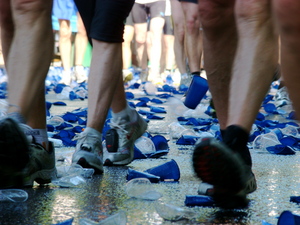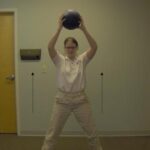Physical therapy can help you with your calf strain. A calf strain is an injury to any of your calf muscles-the muscles located at the back of your leg. It can be due to overstretching or tearing of the muscle. Sometimes, it can be caused by prolonged or repetitive use of your calf muscles.
Physical therapy for calf strain
During your first visit, your physical therapist will most likely ask about your activity that led to your injury. In addition, he or she will conduct a thorough examination and evaluation of your leg. Your therapist will then formulate a comprehensive treatment plan to address your specific problems and goals, which may include a combination of the following
• Ice pack / Hot Pack Application
Depending on your symptoms, your physical therapist may use an ice pack or hot pack. If you have just injured your calf, while pain and swelling are still present, your physical therapist will apply an ice pack for about 20 minutes to help decrease your pain and swelling.
A hot pack may be used by your therapist if your swelling has subsided. This can be helpful in increasing blood flow to your injured muscle, thus, helps speed up your recovery. This may also be used before stretching or massage.
• Electrotherapeutic modalities
Electrotherapeutic modalities, such as ultrasound and TENS may be part of your treatment program. An ultrasound, or US, is a deep heating apparatus than can help soften or heat deeper tissues. Often, this is done before performing stretching exercises or massage.
A TENS, which stands for transcutaneous electrical nerve stimulator, is a small device that produces small currents that can be transmitted through your skin. This device is believed to help decrease pain.
• Gait training using crutches
You may need to use crutches during the first stage of your recovery to prevent putting stress on your injured calf. Sometimes, your doctor may recommend an ankle/foot brace to put your ankle in a certain position to allow maximum healing of your injured muscles.
• Range of motion (ROM) exercises
Range of motion exercises may be introduced once swelling and pain have significantly reduced. Usually it starts out with gentle ankle range of motion exercises and then progressed to pain-free resistive exercises with resistance provided by the therapist or using elastic band. General conditioning exercises may also be introduced such as stationary cycling.
• Manual stretching or self-stretching exercises
Your calf muscles may become tight as a result of not using them, which can also affect your ankle joint range of motion. Stretching the calf muscles can help increase your joint range. In addition, stretching can help increase your muscle’s flexibility.
Your physical therapist will either perform manual stretching or teach you self-stretching techniques to stretch those tight muscles.
• Strengthening exercises
As you progress, your therapist will teach you strengthening exercises to prepare you for your safe return to your usual sport or activities.
There are other treatment interventions that your physical therapist may provide you. The specific treatments will be determined by your physical therapist, often, based on your specific problems and goals.
Home management and exercise program
Your physical therapist may instruct you to continue applying ice / hot pack on your injured muscle and stretching or strengthening exercises when you get home. Follow your therapist’s home instructions.
References:
About Pulled Calf Muscle (February 2011). Physical Therapy (PT) Notes
Medial Gastrocnemius Strain: Treatment & Medication (2009). Emedicine, Medscape
Sprains and Strains (Aril 2009). National Institute of Arthritis and Musculoskeletal and Skin Diseases NIAMS




